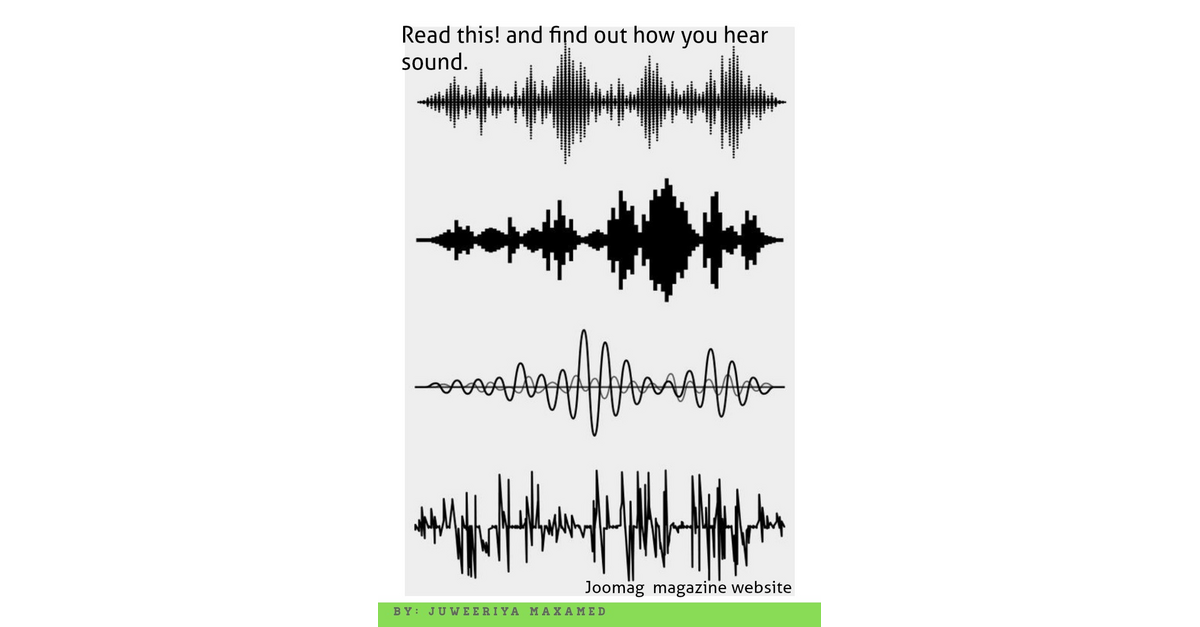
Sound Waves 1
Sound. When a drum is struck, the drumhead vibrates and the vibrations are transmitted through the air in the form of sound waves. When they strike the ear, these waves produce the sensation of sound. Terms used in the study of sound. Acoustics is the science of sound and of its effects on people. Condensation is a region in a sound wave in.

SOUND WAVES 1 WHAT IS SOUND WAVES Sound
In a transverse wave, such as the wave generated in a stretched rope when one end is wiggled back and forth, the motion that constitutes the wave is perpendicular, or transverse, to the direction (along the rope) in which the wave is moving.
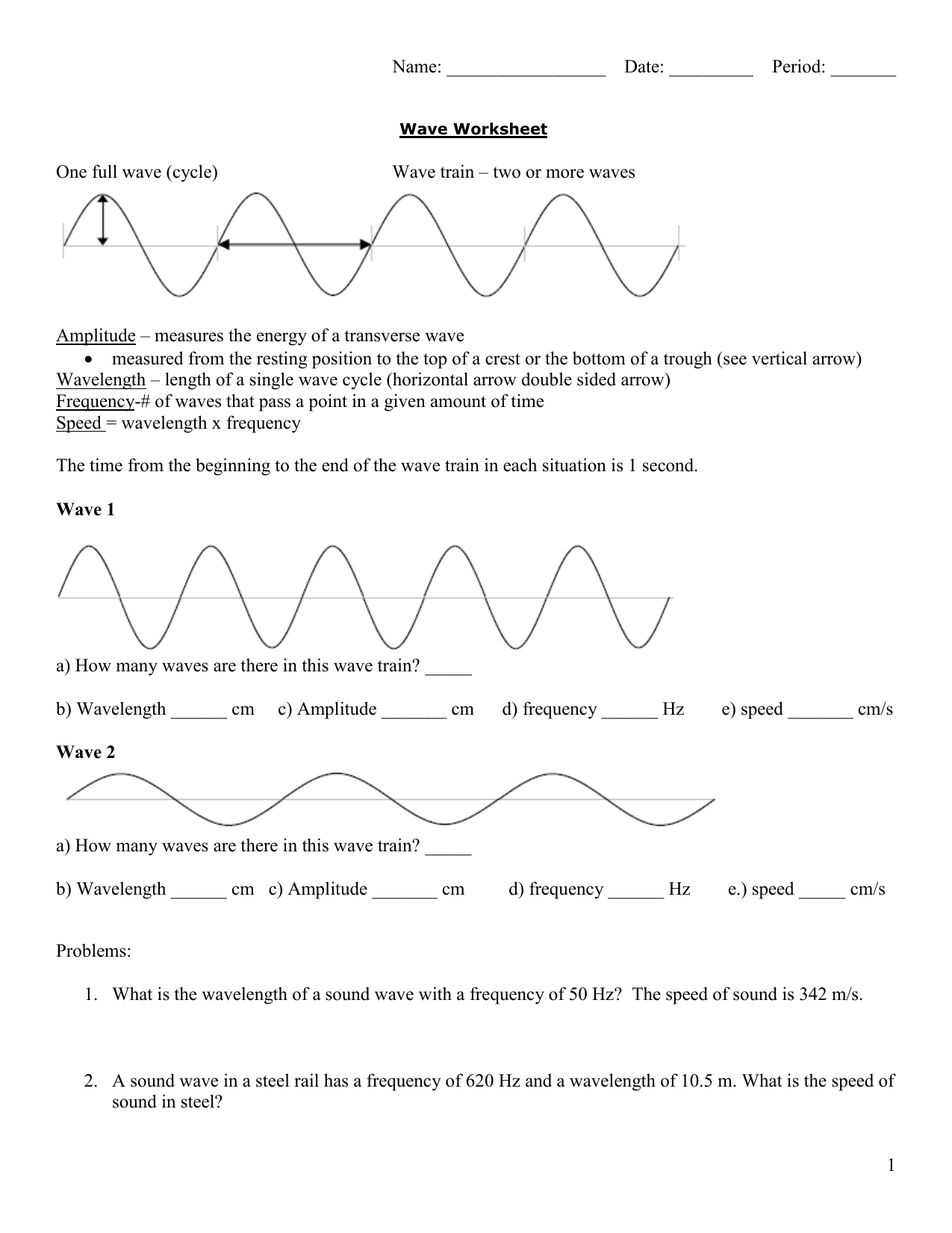
Unveiling the Secrets of Sound Waves Lesson 1 Understanding the AE Sound Wave Phenomenon
1 Hertz = 1 vibration/second. As a sound wave moves through a medium, each particle of the medium vibrates at the same frequency. This is sensible since each particle vibrates due to the motion of its nearest neighbor. The first particle of the medium begins vibrating, at say 500 Hz, and begins to set the second particle into vibrational motion.

SOUND WAVES 1 WHAT IS SOUND WAVES Sound
Sound is defined as " (a) Oscillation in pressure, stress, particle displacement, particle velocity, etc., propagated in a medium with internal forces (e.g., elastic or viscous), or the superposition of such propagated oscillation. (b) Auditory sensation evoked by the oscillation described in (a)." [4]

PPT SOUND WAVES PowerPoint Presentation, free download ID6020601
When the resonant frequency is reached, the glass shatters. A speaker produces a sound wave by oscillating a cone, causing vibrations of air molecules. In (Figure), a speaker vibrates at a constant frequency and amplitude, producing vibrations in the surrounding air molecules.

Sound Wave Diagram Labeled
by KOMO News Staff. Wed, January 10th 2024. 6. VIEW ALL PHOTOS. A screengrab from video shows water rushing onto a Washington state ferry during rough seas on Tuesday, January 9, near the Strait.
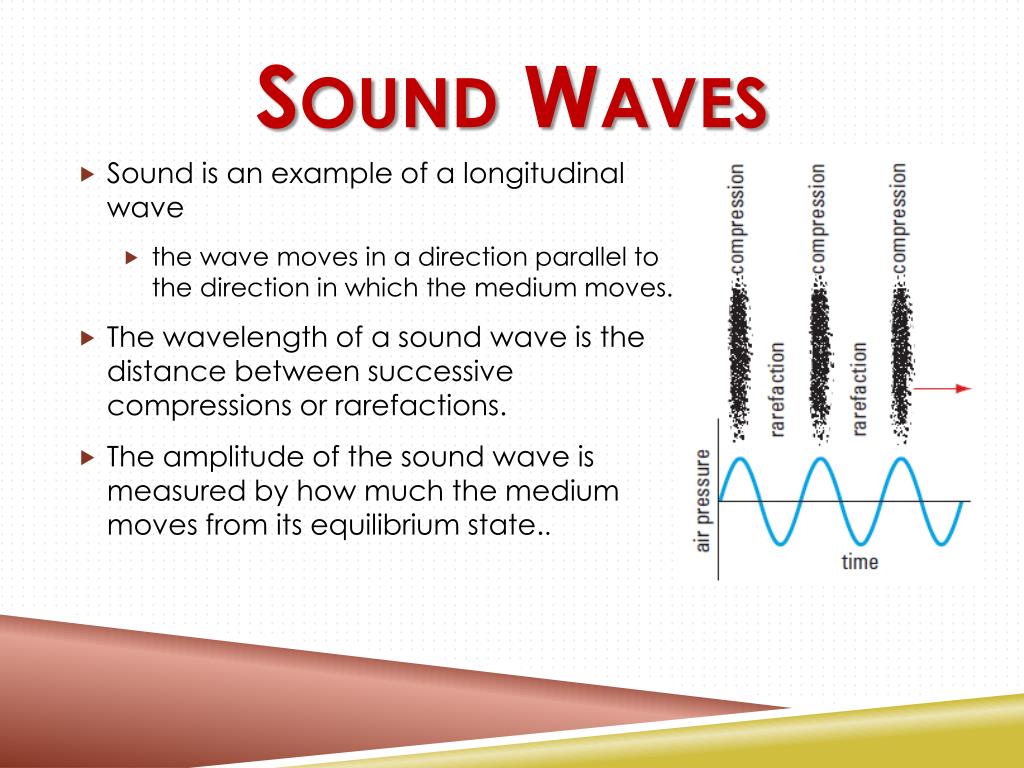
PPT Introduction to Sound PowerPoint Presentation, free download ID2795241
Every five seconds converts to about one mile. The velocity of any wave is related to its frequency and wavelength by v = fλ, v = f λ, 17.3 where v is the speed of the wave, f is its frequency, and λ λ is its wavelength. Recall from Waves that the wavelength is the length of the wave as measured between sequential identical points.
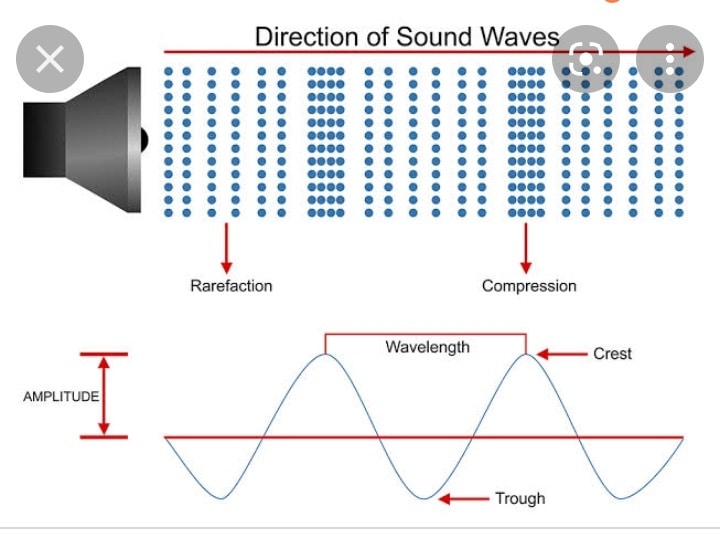
Sound velocity, Nature and properties of sound waves Science online
PhET Global. DEIB in STEM Ed. Donate. This simulation lets you see sound waves. Adjust the frequency or volume and you can see and hear how the wave changes. Move the listener around and hear what she hears.

"Sound Waves 1" Poster for Sale by metaverseoz Redbubble
Introduction to waves. Transverse and longitudinal waves are two types of mechanical waves, which involve the transfer of energy through a medium (e.g. water, air, a solid). Learn about transverse and longitudinal waves through the examples of a shaken rope and a sound wave.

Watch these sound videos
Frequency is defined to be one over the period. So, since the period is the number of seconds per oscillation, the frequency is the number of oscillations per second. Frequency has units of one over seconds, and we call one over a second a hertz. Typical sounds have frequencies in the 100s or even 1000s of hertz.

Sound Waves 1, QLD Edition Super Challenge (Black line masters) Harleys The Educational
Video transcript. - Check out this speaker. If we plug it in, it makes sound. (speaker hums) The way this speaker creates sound is by moving the front of the speaker, which is called the diaphragm, back and forth rapidly. Scientists often use the word oscillation to refer to the back and forth motion of an object.

Wavelength of Sound Waves Class 9 Science Notes by Teachoo
In many instances, sound is a periodic wave, and the atoms undergo simple harmonic motion. Thus, sound waves can induce oscillations and resonance effects (Figure \(\PageIndex{2}\)). Figure \(\PageIndex{1}\): This glass has been shattered by a high-intensity sound wave of the same frequency as the resonant frequency of the glass.

SOUND WAVES 1 WHAT IS SOUND WAVES Sound
In science, sound is defined as the transfer of energy from a vibrating object in waves that travel through matter. All sound waves begin with vibrating matter. The vibrations generate longitudinal waves that travel through matter in all directions. Most sounds we hear travel through air, but sounds can also travel through liquids and solids.

Sound Waves Help Particles Heal Research & Development World
When the resonant frequency is reached, the glass shatters. A speaker produces a sound wave by oscillating a cone, causing vibrations of air molecules. In Figure 17.3, a speaker vibrates at a constant frequency and amplitude, producing vibrations in the surrounding air molecules.

Amplitude of a sound wave Royalty Free Vector Image
MS-PS4-1. Use mathematical representations to describe a simple model for waves that includes how the amplitude of a wave is related to the energy in a wave. [Clarification Statement: Emphasis is on describing waves with both qualitative and quantitative thinking.] MS-PS4-2.
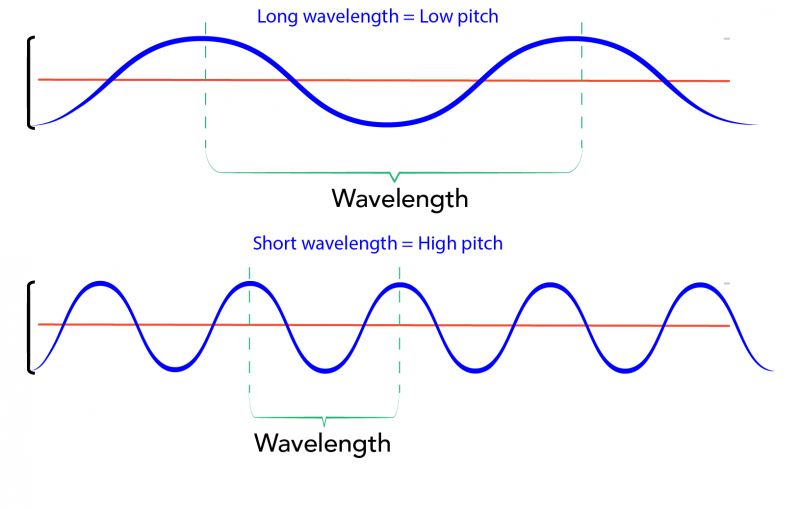
What is Sound and How do we Hear it? Let's Talk Science
A disturbance is anything that is moved from its state of equilibrium. Some sound waves can be characterized as periodic waves, which means that the atoms that make up the matter experience simple harmonic motion. A vibrating string produces a sound wave as illustrated in Figure 14.2, Figure 14.3, and Figure 14.4.